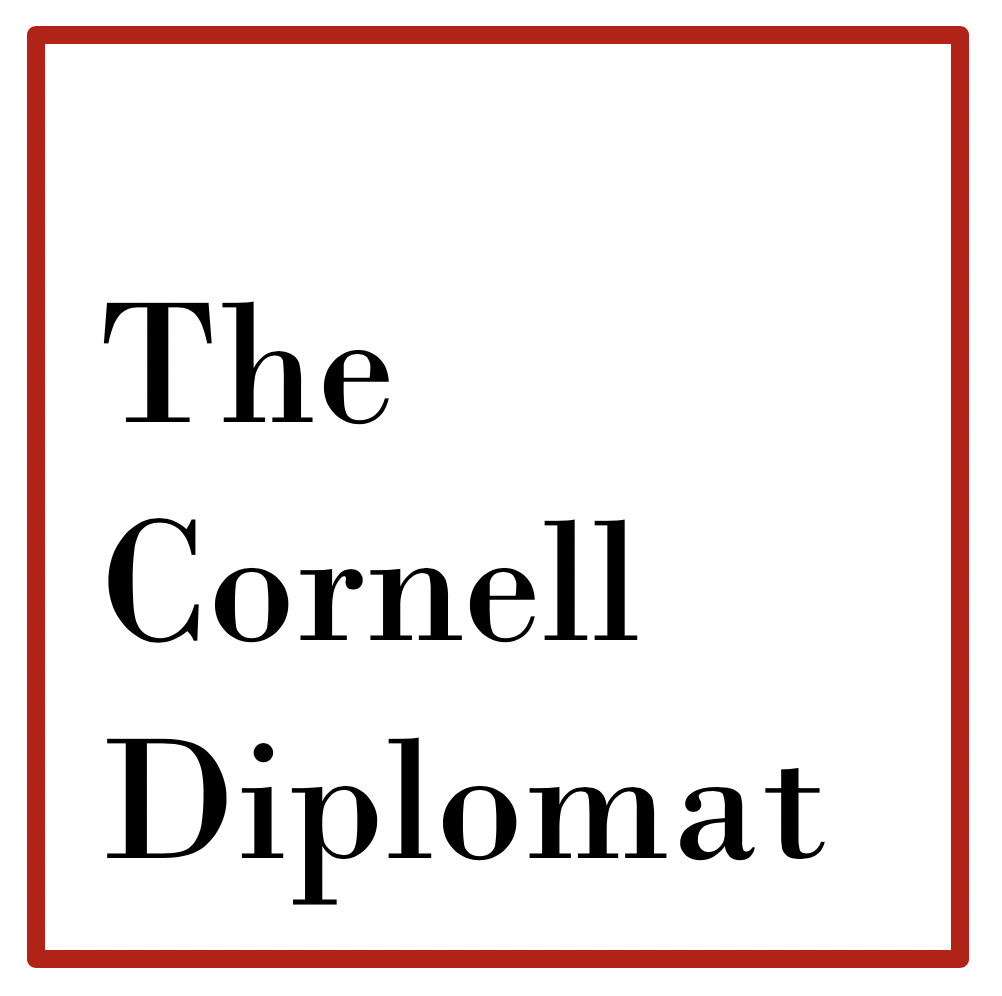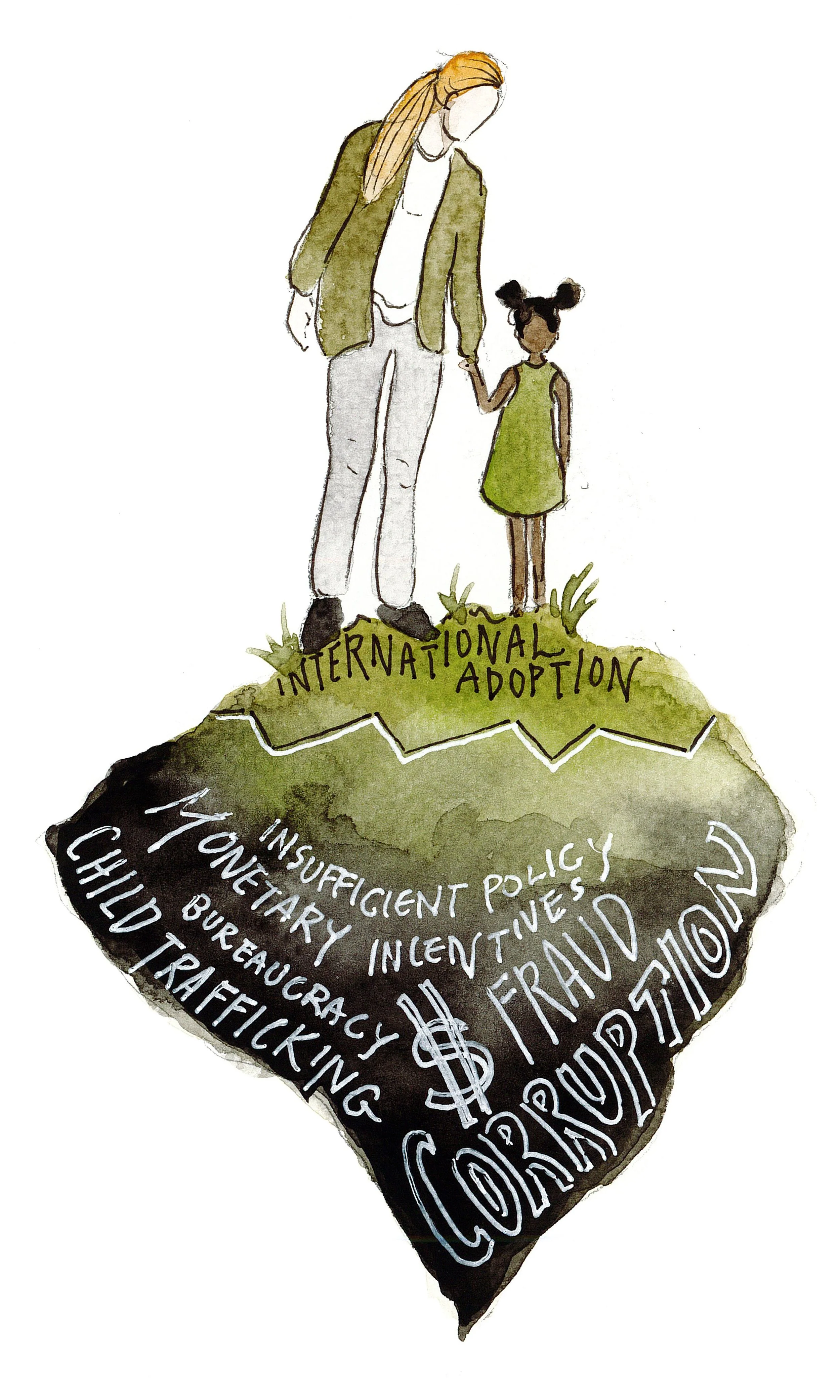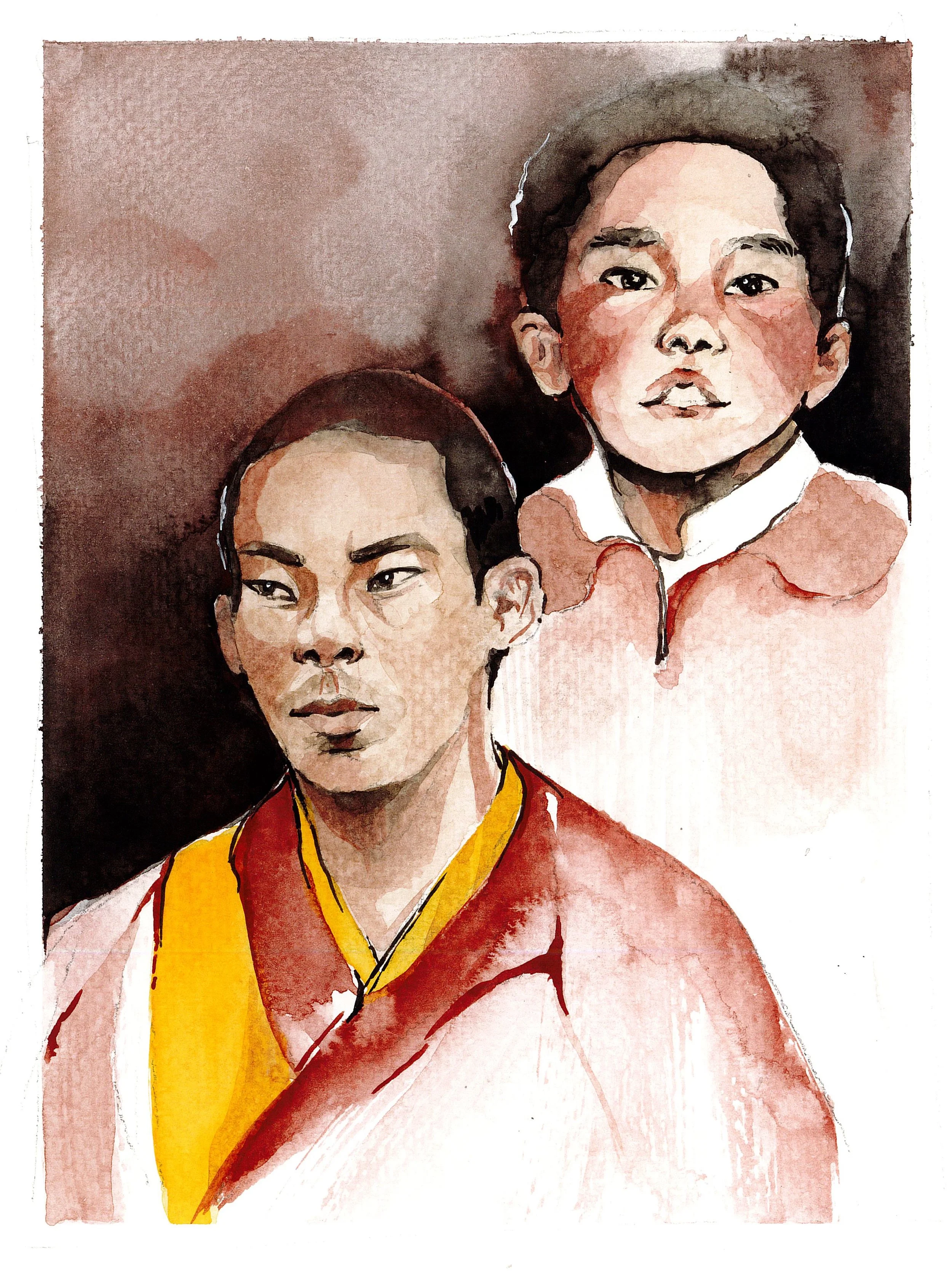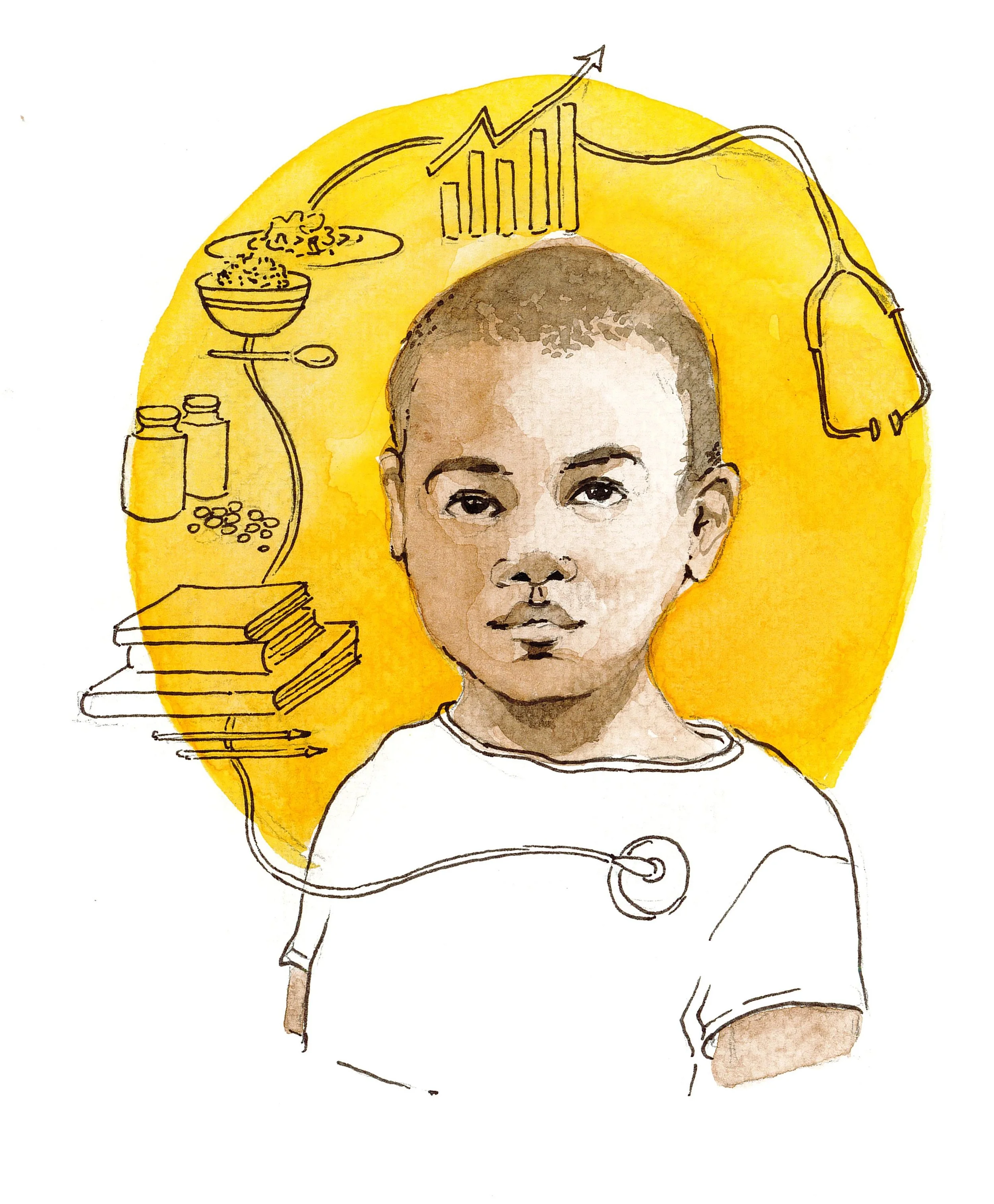Nursery Crimes: The Hidden Pitfalls of International Adoption
Nursery Crimes:
The Hidden Pitfalls of International Adoption
By Lia Sokol
The Orphan with a Family
In 2015, two years after beginning the adoption process, Jessica Davis and her family welcomed home an adoptive daughter, six-year-old Namata (Mata, for short). She arrived from Uganda and was quickly embraced by the Davis family and their Ohio hometown. Yet, as time went on and her English communication skills improved, it became clear that something was amiss. Mata spoke glowingly of her life in Uganda and of her birth mother, who would take her to church, teach her to cook, and walk her to school. Soon, the Davis family came to a striking realization: the “orphan” they had adopted already had a loving family. [i, ii]
Davis immediately began the process to return Mata home and uncover the circumstances behind the corruption that had allowed her to adopt the child. Shortly thereafter, in 2016, the U.S. Department of State temporarily debarred European Adoption Consultants, Inc., the adoption agency that the family had used, accelerating its closure the following year. [iii, iv] Yet, its LinkedIn page still boasts of assisting in the placement of more than 8000 children during its 25-year lifespan. How many of those adoptions, like Mata’s, may have been fraudulent or illegitimate remains unknown. [v]
What is clear, however, is that Namata’s situation is not unique. At face value, international adoption is seen as a humanitarian endeavor that gives orphaned or neglected children homes, families, and an improved quality of life. It is painted as the ideal solution to the heartbreaking problem of orphaned children and a way for wealthy families—more often than not Western ones—to make what they believe to be a meaningful impact. Yet, for some of the families and communities on the other side of adoption, the system itself is its own heartbreaking problem that can take children from their families to meet economic quotas and sociopolitical goals. International adoption has undergone significant changes in the last 15 years, with new policies across the globe causing a sharp decline in the number of adoptions that occur. While these policies have helped halt some of the concerning practices surrounding international adoption, they are far from a comprehensive solution and focus on stopping adoptions altogether rather than improving the process by which they take place. [vi]
Thus, international adoption faces the perplexing dilemma of simultaneously not meeting the demands of those who need it, while also—in Namata’s case, for instance—encroaching on the lives of those who don’t. Propelled by bureaucratic missteps, the incentive of monetary gain, and a lack of governmental oversight, the process as it stands runs the risk of turning a humanitarian initiative into a frightening and disruptive operation. International adoption does not receive adequate attention from policy-makers, meaning that adoption agencies and organizations often go unregulated. [vii] Moreover, in the face of other governmental priorities, it often falls to the wayside of broader geopolitical moves, signifying a need for change in the global regulations overseeing the process.
A Brief Look Back
In order to understand how the current system came to be, it is important to examine the relatively brief history of international adoption. While the practice of adoption more broadly dates back at least to the Ancient Greeks and Romans, international adoption originated only around 65 years ago in the aftermath of World War II when many German children were sent to families abroad. [viii] These war-time adoptions continued during the Vietnam and Korean wars, with many infants being adopted to the US. Indeed, the U.S. has ranked as the top receiving country of international adoptions for several decades and thus serves as the main political contributor to adoption policy.
Policy-wise, international adoptions can be traced back to two legislative acts. The first is the Displaced Persons Act of 1948, which assisted in the resettlement of thousands of European refugees who had been displaced from their home countries during World War II, largely by granting them American visas. [ix] The second is the Refugee Relief Act of 1953, which provided visas to 214,000 refugees, mainly from Communist countries and areas. [x] These policies allowed Americans to adopt around 7000 children, mostly war orphans, from Korea, Japan, and China. [xi] In 1955, an evangelical Oregon couple became pioneers in the international adoption system by lobbying Congress to allow them to adopt Korean “war orphans.” [xii] The couple was praised by politicians and religious leaders for their work but also criticized by professionals and policy-makers for disregarding minimum standards for adoptive families, highlighting the long lasting contentious debate surrounding international adoption.
When China opened its doors to international adoptions in 1992, adoption numbers skyrocketed. Adoptions in the US peaked in 2004, when 22,990 children were adopted from a foreign country. However, since then, numbers have sharply declined. New policies restricting adoption out of many countries over the last several decades have prompted countries to close their borders or to decrease the number of children who are sent abroad. For example, China has significantly decreased its numbers of international adoptees, while Guatemala, Cambodia, Ethiopia, and Nepal have entirely closed their intercountry adoption programs due to concerns about child trafficking and other questionable agency practices. [xiii, xiv] While this decline in adoption numbers might appear to indicate greater attention to policies and regulations that would protect adoptive children and families, it also points to a decrease in political interest in maintaining the efficacy of the adoption process. The rules that are in place are not extensive enough to be effective, and the policymaking process to create new ones is slow. [xv]
Insufficient Safeguards
The primary concern with international adoption is the tenuous nature of existing policies regulating the process, along with a general lack of policies both at the national and international level. The most extensive international agreement is the 1993 Hague Convention on the Protection of Children and Cooperation in Respect to Intercountry Adoption, which is designed to prevent child trafficking for adoption and safeguard intercountry adoptions. As of 2021, the Convention has 103 signatories including the US, who signed it in 2008. The Convention has led to reforms in states across the world, and countries like Albania, Bulgaria, and the Philippines have implemented central government bodies to oversee child welfare and seek out solutions for orphaned children. These regulations have helped fight against fraud, coercion, and the kidnapping of children for the purpose of adopting them out. [xvi]
Though the Hague Convention has brought about improvements, it is not a sufficient solution. Many countries—including Ethiopia, Russia, South Korea, and Ukraine—are not yet party to it, indicating gaps in its reach. More importantly, the content of the Convention addresses only some of the issues and corrupt measures that international adoption faces. The Convention ignores the economic incentives of adoption and does not include any provisions to limit the amount of money exchanged by agencies and adopters or ensure that fees are kept proportionate with local economies.
The monetary underpinnings of international adoption pose a significant barrier to regulating and improving the process. The large sums of money that adoption agencies are offered for adoption incentivize coercion and fraud, including the buying and kidnapping of children from their existing families. Some families are also told that their child is being sent to the West for educational purposes, rather than to be adopted. Adoption agencies’ need for profit also means that they focus on the most ‘marketable’ children—generally infants—and overlook children who are older, disabled, traumatized, or in need of extra care. [xvii] Rather than tackling the adoption agencies at the root of the problem, policies like the Hague Convention have ended up halting adoption entirely.
A Political Bargaining Chip
Geopolitical strife presents another hurdle to improving adoption policy, complicating the challenges of ensuring that the process is ethical, timely, and beneficial for all parties. In 2012, for instance, adoption became collateral damage in the crossfire of strained relations between the US and Russia. That year, the US passed the Magnitsky Act, a law that barred Russian officials suspected of human rights abuses from entering and engaging in dealings with the US. [xviii] Two weeks after the Magnitsky Act was passed, Russian president Vladimir Putin signed a piece of legislation that blocked the adoption of Russian children by parents in the US–the Dima Yakovlev Law. Though the Russian government claimed that the Law was passed in response to the death of a Russian child adopted to the US, the underlying motivation was likely in direct response to the American Magnitsky Act. [xix] Thousands of adoptions being processed were halted immediately, leaving Russian children and American families as the collateral damage of an ill-timed geopolitical maneuver.
The Yakovlev Law points to a broader historical picture of the connections between international adoption and geopolitics. Spikes in adoption have historically come about as a result of wars and regional tragedies: in addition to the wars in Korea and Vietnam, which instigated a spike in adoptions, other types of tragedy also have led to similar increases in adoptions. 2004 marked a record-breaking year for international adoptions in the U.S., but it also marked the beginning of what adoption experts call “the cliff,” after which adoptions rapidly declined as policies shifted to bar prospective adoptive families from going beyond borders to adopt. Ultimately, countries use all the tools at their disposal for their own self-interest, whether it be foreign aid, trade agreements, or climate finance. Within the broader picture of international relations, adoption often follows suit. [xx]
Conclusion
The altruistic motives for international adoption are, in many cases, undercut by the harsh realities of corruption, fraud, and economic incentives below the surface. The adoptive families, home communities, and, most importantly, the children involved deserve better than what the current system has to offer. Current regulations on the adoptive process are weak and leave room for continued abuse of both children and families. The fluctuating geopolitical landscape creates further strain on the process, and policies lack the stability and structure necessary to safeguard the process. Without change, international adoption risks remaining in its current uncertain state as a fragile example of humanitarian engagement that exacerbates existing power structures and does not benefit those that it seeks to help.
Illustration by Esther Wang
[i] Jessica Davis, “The ‘orphan’ I Adopted from Uganda Already Had a Family,” CNN, October 13, 2017, https://www.cnn.com/2017/10/13/opinions/adoption-uganda-opinion-davis/index.html.
[ii] Randi Kaye and Wayne Drash, “Kids for Sale: ‘My Mom Was Tricked,’” CNN, https://www.cnn.com/2017/10/12/health/uganda-adoptions-investigation-ac360/index.html.
[iii] “European Adoption Consultants (EAC) Temporary Debarment Upheld,” https://travel.state.gov/content/travel/en/News/Intercountry-Adoption-News/European-Adoption-Consultants-Temporary-Debarment-Upheld.html.
[iv] Light Of Day Stories, “Adoption Agency Staff of ‘European Adoption Consultants’ Charged By Federal Grand Jury With Fraud, More,” Light of Day Stories, August 15, 2020, https://lightofdaystories.com/2020/08/14/adoption-agency-staff-of-european-adoption-consultants-charged-by-federal-grand-jury-with-fraud-more/.
[v] “European Adoption Consultants: About | LinkedIn,” https://www.linkedin.com/company/european-adoption-consultants/about/.
[vi] Elizabeth Bartholet, “International Adoption: A Way Forward,” INTERNATIONAL ADOPTION, n.d., 14.
[vii] “Orphan Fever: The Dark Side of International Adoption – UAB Institute for Human Rights Blog,” https://sites.uab.edu/humanrights/2018/03/13/orphan-fever-the-dark-side-of-international-adoption/.
[viii] “What Is the History of Adoption?,” Adoption.org, https://adoption.org/what-is-the-history-of-adoption.
[ix] “The Displaced Persons Act of 1948,” Truman Library Institute (blog), April 29, 2019, https://www.trumanlibraryinstitute.org/the-displaced-persons-act-of-1948/.
[x] “Refugee Relief Act (1953) - Immigration History,” https://immigrationhistory.org/item/1953-refugee-relief-act/.
[xi] Richard Tessler, Mia Tuan, and Jiannbin Lee Shiao, “The Many Faces of International Adoption,” Contexts 10, no. 4 (October 1, 2011): 34–39, https://doi.org/10.1177/1536504211427866.
[xii] “Adoption History: Bertha and Harry Holt,”, https://pages.uoregon.edu/adoption/people/holt.htm.
[xiii] “History of International Adoption | Adoption | Gender & Justice Project,” Brandeis University, https://www.brandeis.edu/investigate/adoption/history.html.
[xiv] Susan Jacobs and Maureen Flatley, “Uncovering The Truth About Intercountry Adoption’s Decline,” The Imprint, April 23, 2019, https://imprintnews.org/adoption/the-truth-about-intercountry-adoptions-decline/34658.
[xv] Olga Khazan, “Why Are Other Countries Wary of American Adoptions?,” Washington Post, December 17, 2012, https://www.washingtonpost.com/news/worldviews/wp/2012/12/27/why-are-other-countries-wary-of-american-adoptions/.
[xvi] E. J. Graff, “The Lie We Love,” Foreign Policy (blog), https://foreignpolicy.com/2009/10/06/the-lie-we-love/.
[xvii] “The Problem With Saving the World’s ‘Orphans’,” Brandeis University, https://www.brandeis.edu/investigate/adoption/bgop-ed.html.
[xviii] Alex Horton, “Analysis | The Magnitsky Act, Explained,” Washington Post, July 14, 2017, https://www.washingtonpost.com/news/the-fix/wp/2017/07/14/the-magnitsky-act-explained/.
[xix] David Herszenhorn and Andrew E. Kramer, “Russian Adoption Ban Brings Uncertainty and Outrage - The New York Times,” December 28, 2012, https://www.nytimes.com/2012/12/29/world/europe/russian-adoption-ban-brings-uncertainty-and-outrage.html
[xx] Sarah Bermeo, “Development, Self-Interest, and the Countries Left Behind,” Brookings (blog), February 7, 2018, https://www.brookings.edu/blog/future-development/2018/02/07/development-self-interest-and-the-countries-left-behind/.



